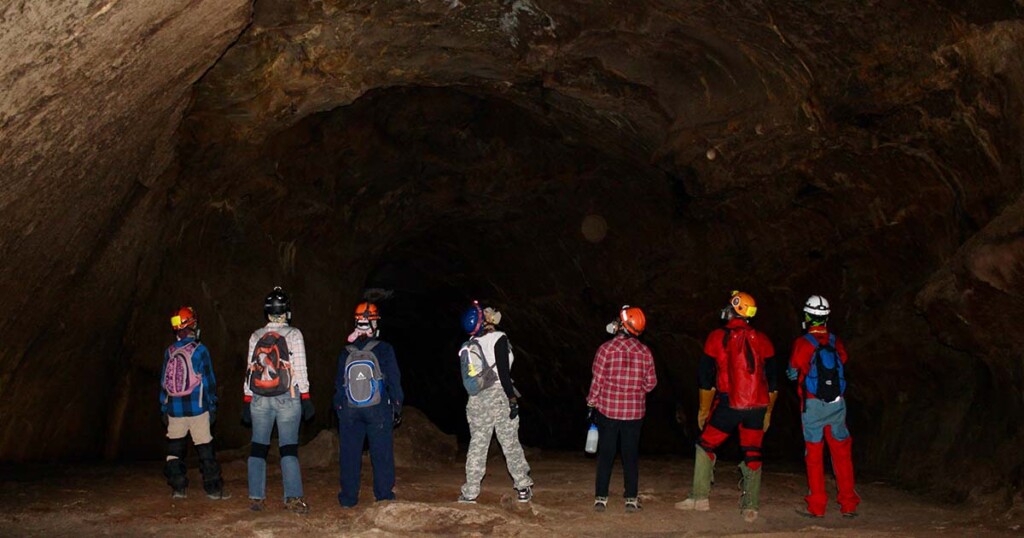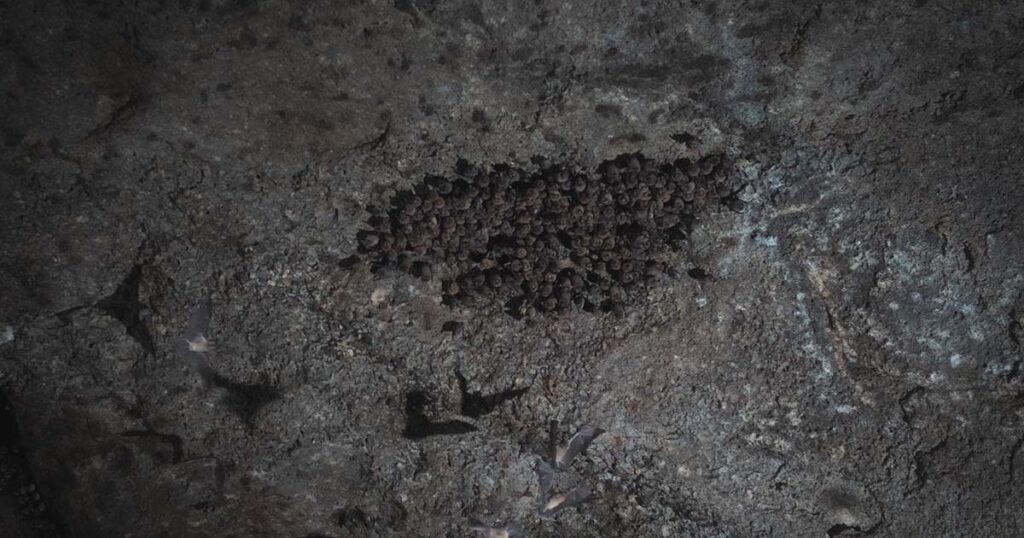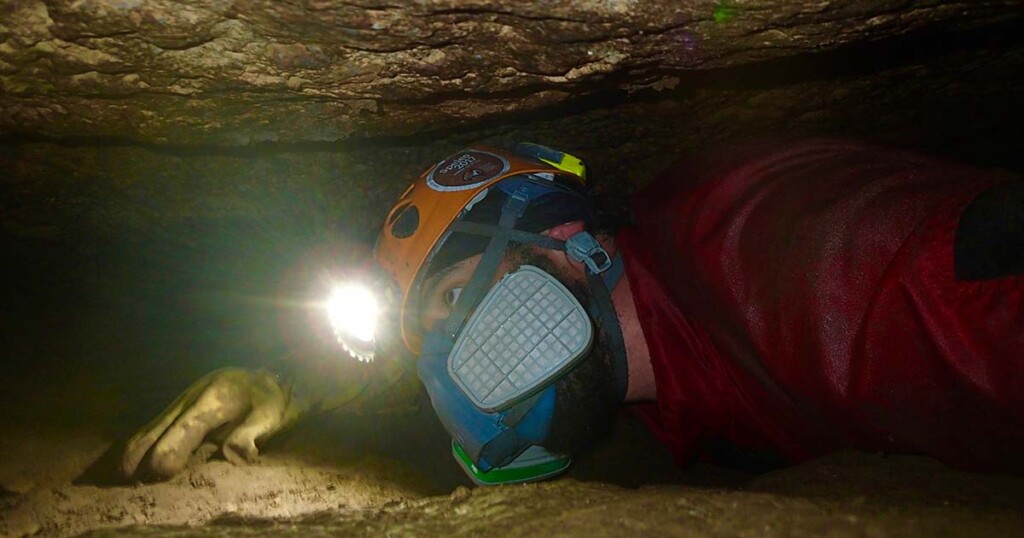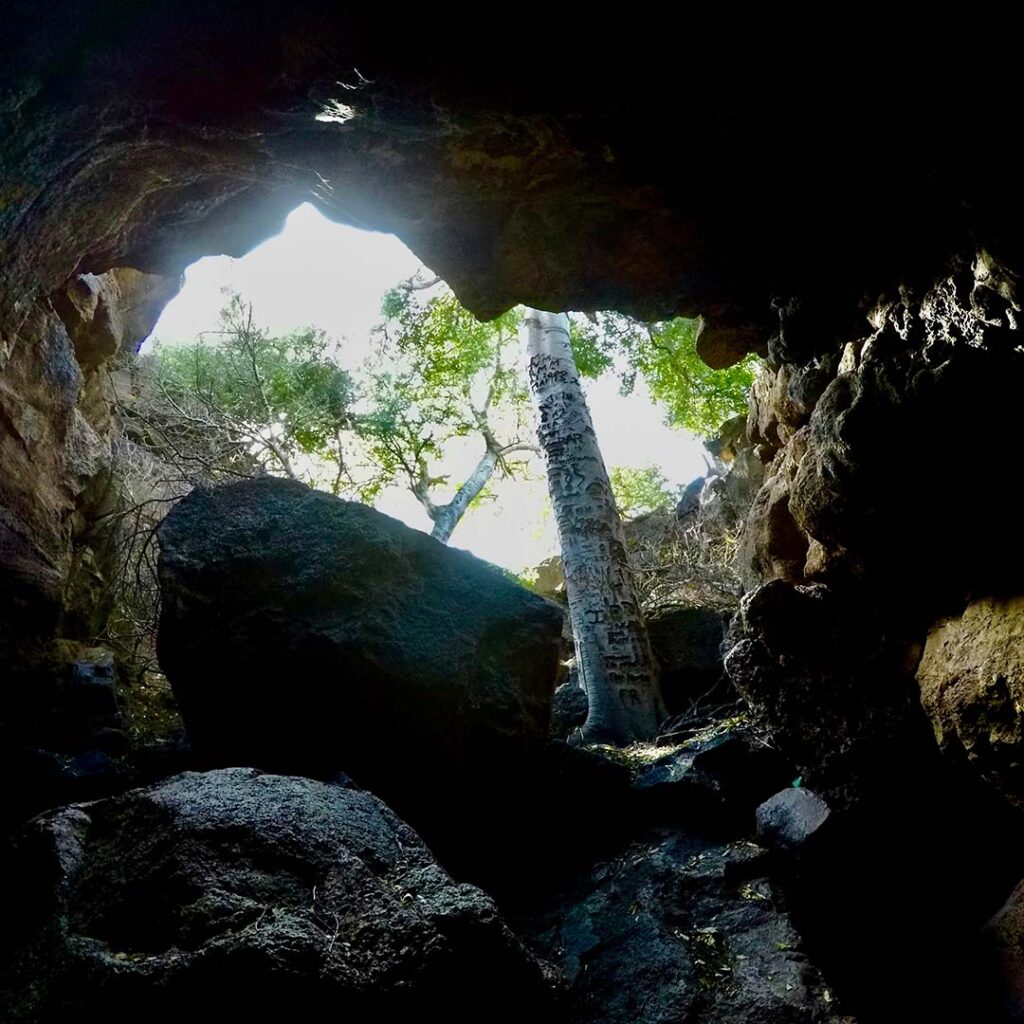In 2016, I had the opportunity to visit one of the most iconic volcanic landscapes in Sonora: El Pinacate and Gran Desierto de Altar Biosphere Reserve. The invitation came from the “Batman” of Mexico, Rodrigo Medellín and his team from the Laboratory of Ecology and Conservation of Terrestrial Vertebrates at the Universidad Nacional Autónoma de México. That was when I saw my first lava tube and one of the largest maternity caves described for the lesser long-nosed bat (Leptonycteris yerbabuenae). It’s undoubtedly one of my most memorable moments as a cave biologist and bat fan.
However, that year I would also have the opportunity to see another lava tube, this time in Moctezuma, in the northeast of Sonora within the Sky Islands. There lies a volcanic landscape of 380 km² to the southeast of this municipality.
If you use a satellite system to explore the surroundings, you will be able to see imposing plateaus characterized by their dark or black hue. But how did we find this cave?
It all started with a message on the Facebook page of the Grupo Pionero Espeleológico de Sonora, a caving group I cofounded, after a series of interviews I had about my master’s work. Jesús Alain Durazo was the one who called us to explore the cave and unmask its secrets. As for the name of the lava tube, known as Cueva Cerro Blanco, it owes its name to a nearby volcanic cone called Cerro Blanco.
Something that always catches my attention every time I visit is the change in vegetation. As you advance along the road, you can see how the trees shrink. When you reach the volcanic area, the mesquites, palo verdes, and other trees look like bushes, possibly due to the soil conditions where they are found.
Upon arrival, it’s only a matter of walking 200 meters to locate the main entrance, partially hidden by a dense vegetation cover. I remember the excitement of entering and leading the expedition. The objective is always the same when we explore a cave: explore it in its entirety, map it and see what species of bats there are. So we got ready to go in with our basic equipment, with a hand net to identify the bats on site.

During our first visit to the cave, we observed three distinct sections despite it being just one long tube. At the beginning, it’s an easy walk. The first section is quite wide and the ceiling is high and difficult to reach. But as we advanced, the walls and ceiling narrowed, and eventually we moved into a section that could only be accessed by crawling on all fours or dragging oneself through.
At the end of this section was when we found the protagonists of our expedition. Thousands of bats resting on the ceiling, and, below them, a floor completely covered in guano, and moving constantly due to the presence of thousands and thousands of insects, mites, and other organisms.

Leaving behind the exploration narrative for a moment, we found several species of bats in this lava tube, although we do not yet know whether their presence is seasonal or permanent. To date, three species of insectivorous bats have been described.
The species are the ghost-faced bat (Mormoops megalophylla), Davy’s lesser naked-backed bat (Pteronotus davyi) and the California leaf-nosed bat (Macrotus californicus). These bats feed mainly on insects such as moths, beetles and crickets, playing a crucial role in pest control. The size of their populations varies: Mormoops megalophylla can form colonies of up to 10,000 individuals, similar to what was observed in the cave, while the other two species usually form smaller colonies, of no more than 300 individuals.
And finally, back to the cave: the last section is only possible to reach by crawling along a six-meter flat surface, known as a laminate. This is the narrowest spot, and it’s a challenge we enjoy every time we have the chance to visit the cave. Here, the humidity is almost 100%, and the tube widens again, allowing for exploration on foot. This final section offers a fascinating contrast to the previous areas.

On our way back, we took measurements and discovered that we had just been in a lava tube that was 550 meters long and 13 meters deep. Much longer than the one located in the El Pinacate Reserve, but fulfilling the same function: being an important refuge for Sonoran bats.
Fortunately, these three species do not face conservation problems. However, the disturbance of caves, whether through inappropriate visits or destruction, can have serious negative consequences for bat populations. So if you know of a cave or lava tube with bats, check with an expert caver first before entering about the proper way to do it. Bats are our allies, and together we can take care of their habitat and protect them.
Omar Calva is a communications intern for Sky Island Alliance. An expert caver from Sonora, he’s currently pursuing his PhD at Eötvös Loránd University in Hungary, focusing on the phylogeny and biogeography of one of the country’s cave-dwelling crustaceans.

